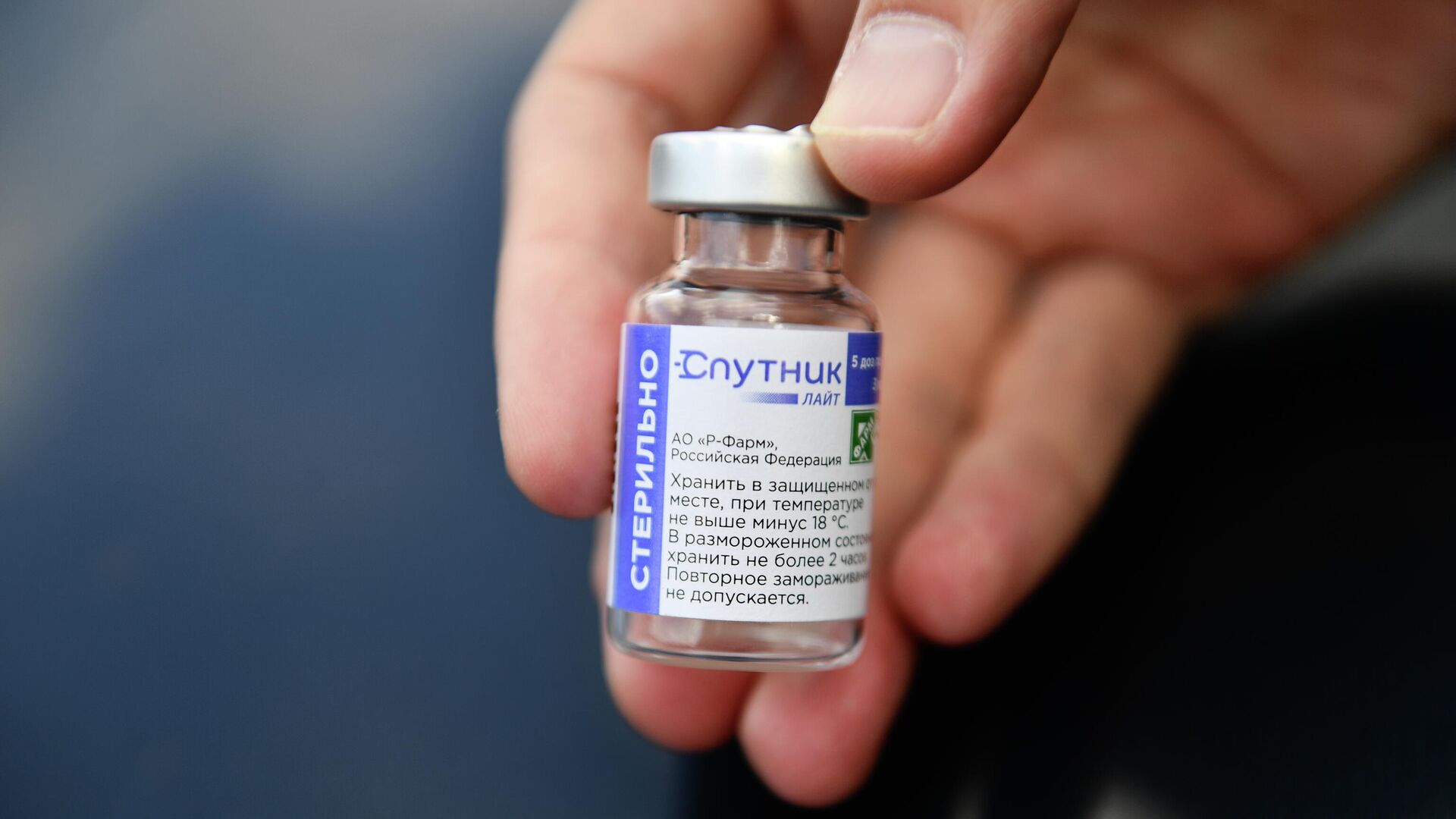Sputnik Vaccine Beats Omicron, Good as Universal Booster Jab – World’s Leading Virologists Say
21:13 GMT 26.01.2022 (Updated: 21:21 GMT 26.01.2022)

© Sputnik / Pavel Lisitsin
/ Subscribe
Leading infectious disease and vaccine experts from Argentina, France and the US have praised the Russian jab as well as the results of a recent Italian study showing that Russia’s Sputnik V has the highest efficacy against Omicron when compared to its counterparts, namely Pfizer.
“Conclusive and encouraging” – these are the terms which award-winning infectious disease specialist Hugo Pizzi from Argentina’s Córdoba University used when referring to the results of the recent Italo-Russian comparative vaccine study of Sputnik V and Pfizer jabs performed in a Rome lab, which stated that Sputnik V was generally 2.1 times more efficient against the Omicron strain than the Pfizer jab.
In a commentary published by the vaccine’s investor – RDIF, Professor Pizzi commends Sputnik as “an excellent vaccine with many properties”, stressing that the university’s own findings on the matter corresponds with the latest data:
“At the University of Córdoba, we have confirmed the high efficacy of the [Sputnik] vaccine in several published studies on other variants, such as Manaos and Delta, so it doesn’t surprise me that the efficacy against #Omicron is as high as the study shows.”
Hugo Pizzi, Prof at Córdoba University, Argentina, on study of Sputnik’s Omicron virus neutralization vs Pfizer: “The results presented in the Spallanzani Institute study are conclusive and encouraging. Sputnik is an excellent vaccine with many properties”https://t.co/4RdhLy6bQH pic.twitter.com/lqShRDWekF
— Sputnik V (@sputnikvaccine) January 26, 2022
Far Stronger Protection
According to a leading US vaccine expert, Professor Hildegund Ertl, “Expression of antigen by adenovirus vector is by far longer than by mRNA, promoting stimulation of durable antibody-secreting cells”.
The Philadelphia-based expert, who specializes in combining parts of different viruses, echoes Hugo Pizzi in praising the Spallanzani study results as “extremely promising”, while also underscoring the durability of the protection that the Russian jab provides.
“Antibody titers to the original “wild type” virus remained stable for a period of 6 months after Sputnik V vaccination but declined about 10x after mRNA vaccination. This likely reflects differences in the biology of 2 vaccine prototypes”
According to Pfizer’s own data, which the pharma giant submitted to the FDA last year, its jab's protective qualities against the infection crumble to a staggering 43% within 6 months after full vaccination.
The Universal Booster
French immunologist and researcher Cecil Czerkinsky has also welcomed the Spallanzani research results, which convincingly show “that adenovirus vectored Sputnik is capable of enhancing neutralizing antibody responses not only to Delta but also to Omicron when used as stand-alone homologous vaccine booster and as a booster in combination with an mRNA vaccine”.
According to the researcher, “booster vaccination with mix & match vaccines, including Sputnik Light, is efficient against mutations”, which Omicron is infamous for, including more than 30 mutations detected in the S glycoprotein as well as multiple mutations in receptor-binding domain (RBD) and the N-terminal domain of S glycoprotein which are associated with resistance to neutralizing antibodies (NtAb).
Sputnik Light has received approval in more than 30 countries, including as a booster for other jabs. Sputnik V is approved in 71 countries with a total population of over 4 billion people. Unlike Pfizer or Moderna, which use mRNA technology, both Sputnik V and Sputnik Light have been developed using a human adenoviral vector platform, which has been around for three decades. Unlike mRNA, adenoviral vector-based jabs have so far not been associated with rare serious adverse effects, such as myocarditis and pericarditis. Unlike Pfizer, both Russian jabs can be kept and transported at temperatures of +2 +8 Celsius, and don’t require a special cold-chain infrastructure for storage and distribution.

